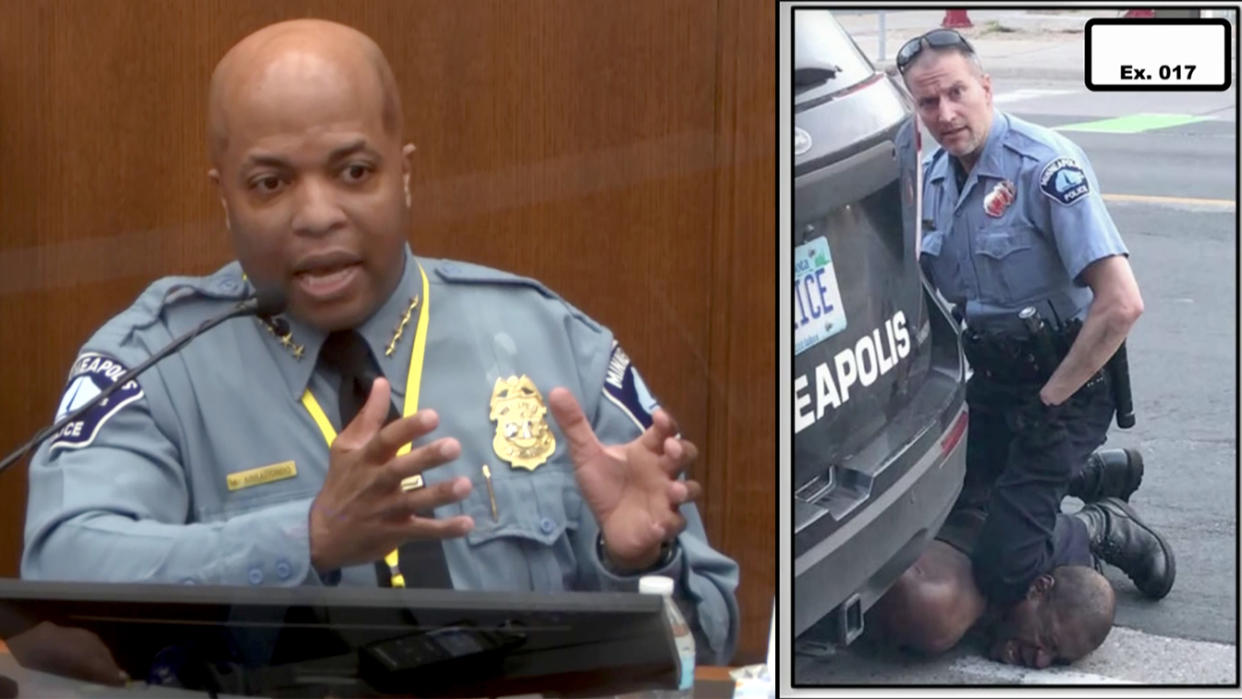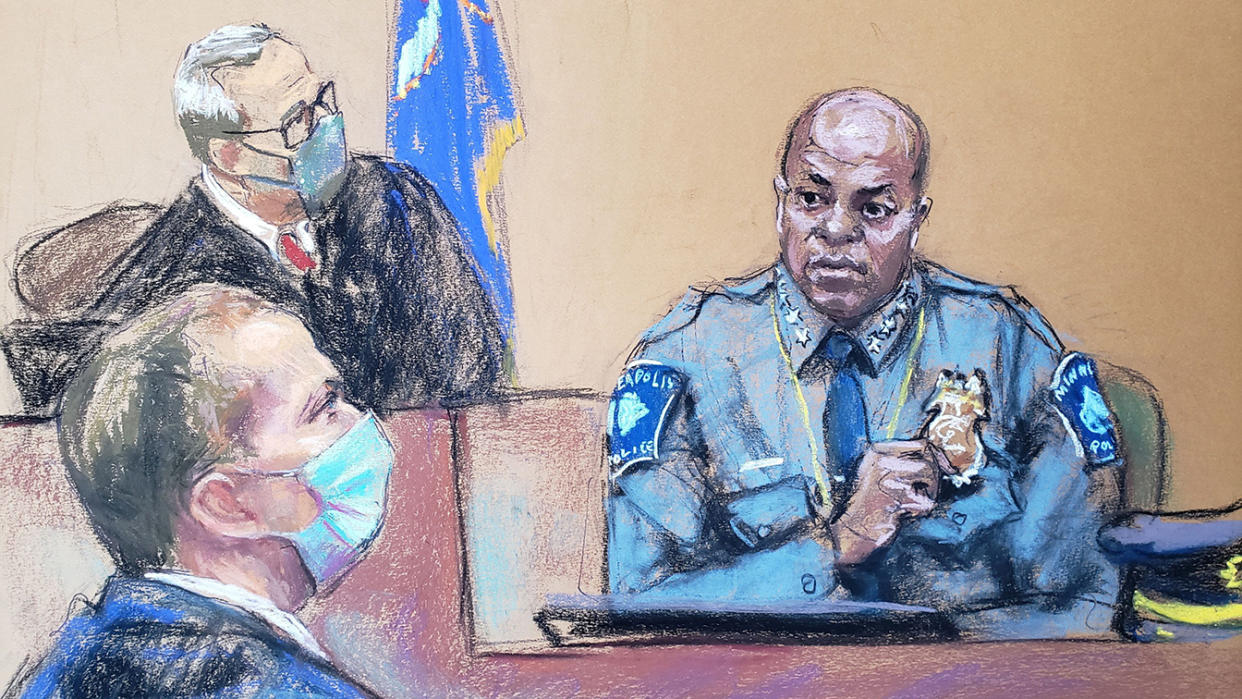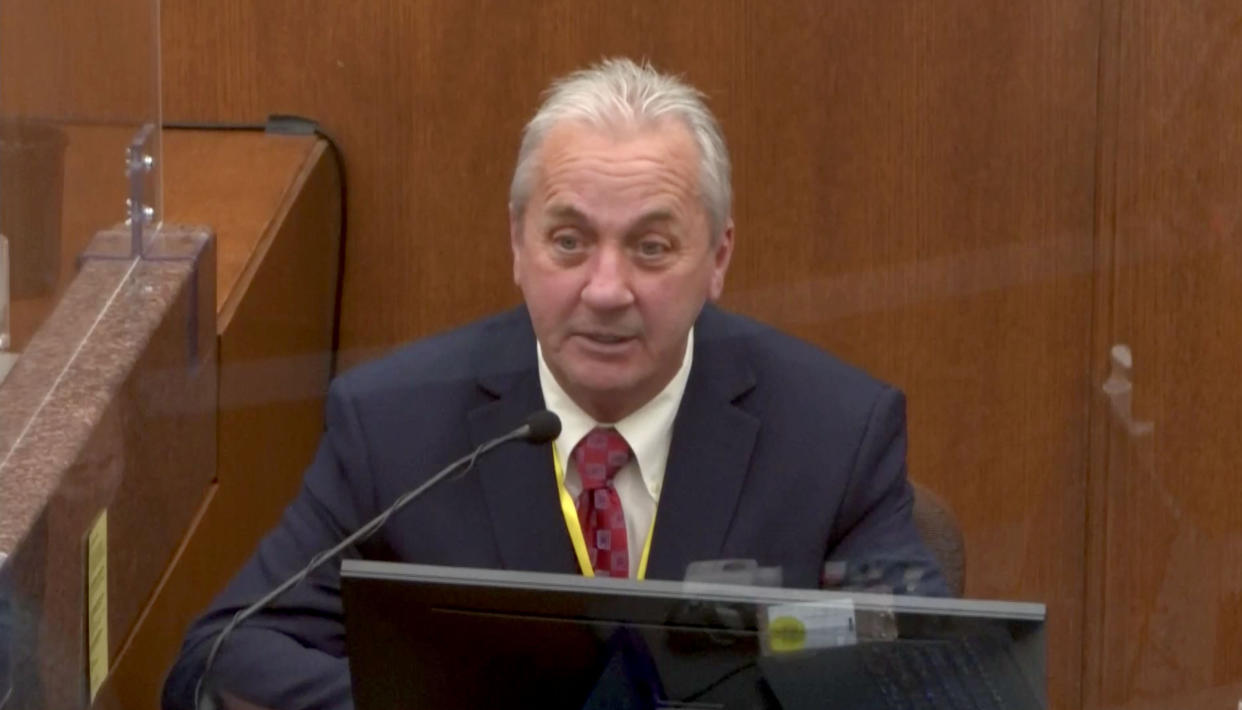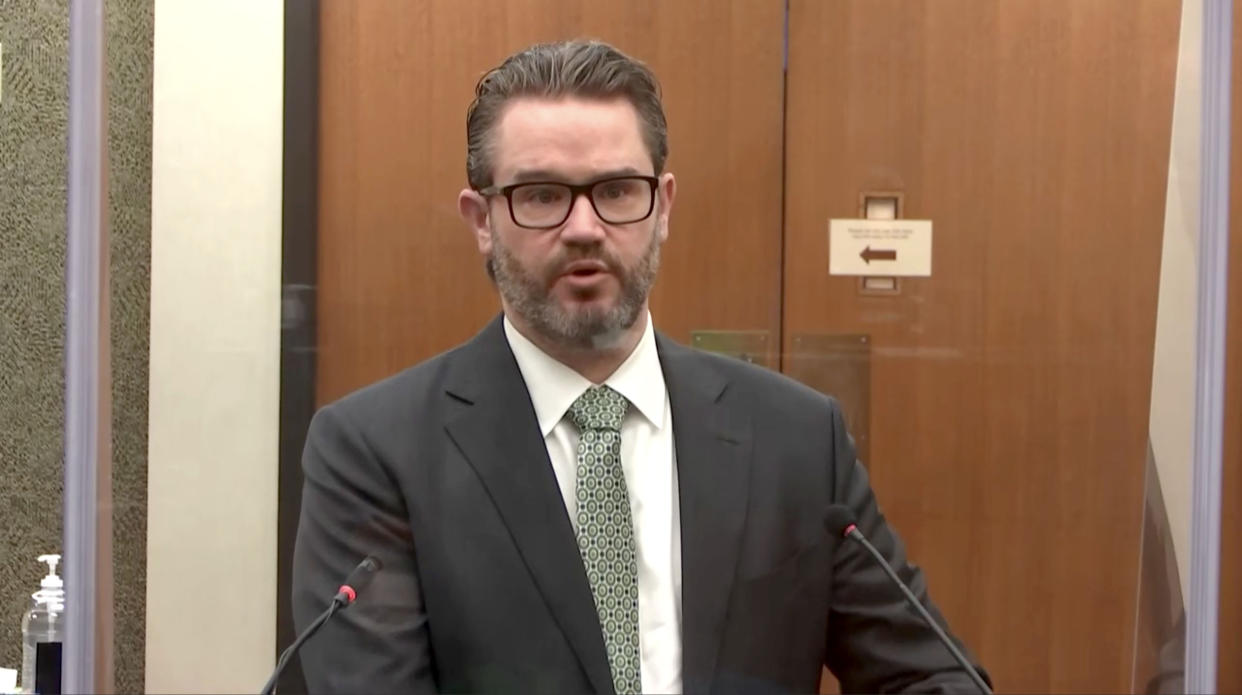Police chief: Chauvin's neck restraint on George Floyd 'absolutely' violated department policies
Minneapolis Police Chief Medaria Arrandondo said during testimony Monday that former officer Derek Chauvin’s use of deadly restraint on George Floyd “absolutely” violated the department’s policies and should have stopped when Floyd was no longer resisting.
“Once Mr. Floyd had stopped resisting,” Arrandondo, the top officer to testify at Chauvin’s murder trial, told the prosecution, “and certainly once he was in distress and trying to verbalize that ... that should have stopped.”
Under questioning from the prosecution, Arrandondo, the 21st witness to testify, explained the department’s policies on use of force, including neck restraints and chokeholds, and how officers are required to respond to a medical event.
When asked by prosecuting attorney Steve Schleicher whether Chauvin and his fellow officers’ actions complied with the department’s policies, based on his review of the body camera footage and bystander videos, Arrandondo said it did not.

“There’s an initial reasonableness in trying to get him under control in the first few seconds,” Arrandondo said, of the videos, which show Chauvin kneeling on Floyd’s neck for almost 10 minutes, even after Floyd repeatedly said he couldn’t breath. “But once there was no longer any resistance, and clearly when Floyd was no longer responsive and motionless, that level of force to a person, handcuffed behind their back — that in no way shape or form is anything that’s by policy, it's not part of our training and it certainly is not part of our ethics and values.”
Schleicher also asked if the restraint on Floyd was reasonable force.
“It is not,” Arrandondo said. “It has to be objectively reasonable. We have to take into account the circumstances, the threat to the officer, the threat to others, and the severity of it. That is not our policy. That is not what we teach.”

Arrandondo is the latest high-ranking police official to indicate that Chauvin’s use of force on Floyd went beyond what was required during the May 25, 2020 incident outside Cup Foods. On Friday, Richard Zimmerman, a lieutenant in the homicide division, called the use of force “totally unnecessary.”
“Pulling him down to the ground face down and putting your knee on a neck for ... that amount of time is just uncalled for,” Zimmerman said. “I saw no reason why the officers felt they were in danger, if that’s what they felt. And that’s what they would have to feel to be able to use that kind of force.”

Last Thursday, former Minneapolis Police Sgt. David Pleoger, who was a shift supervisor at the time of the incident, told Schleicher that he believes the use of restraint on Floyd should have ended when he “was no longer offering up any resistance to the officers.”
During cross-examination on Monday, Chauvin’s attorney Eric Nelson questioned Arrandondo about the department’s policy on use of force, which cites a U.S. Supreme Court decision from 1989 — Graham v. Connor — in which the court said the claims of excessive force should be evaluated in light of the “facts and circumstances” of each case.
“So the reasonableness standard, or the objectively reasonable standard, applies to the facts and circumstances that are known by the officer at the time the force is being used, correct?” Nelson asked. “Yes,” Arrandondo responded.
Under questioning from Nelson, Arrandondo defined Chauvin’s knee on Floyd’s neck as a “conscious neck restraint,” which is when an officer applies “light to moderate pressure,” to a person’s neck in an attempt to restrain the person but not render them unconscious. Arrandondo noted that Chauvin’s act did not comport with the department’s policy on the move.

Throughout the trial, Nelson’s line of questioning has suggested that Chauvin and the officers involved in the Floyd incident did the best they could in a fast-moving situation, and that the nearby group of bystanders, who grew angry as Chauvin and other officers remained on Floyd, affected the officers’ decision making.
Earlier Monday, the emergency room physician who worked on Floyd for 30 minutes before pronouncing him dead testified that his death was most likely caused by asphyxia, or a lack of oxygen.
Dr. Bradford T. Wankhede Langenfeld, a senior resident at the Hennepin County Medical Center and prosecution witness, said that it was unlikely Floyd’s death was caused by a drug overdose, in part because the paramedics who brought him gave no indication an overdose might have occurred.
But under cross examination by the defense, Langenfeld conceded that asphyxiation can also be triggered by taking fentanyl and methamphetamine — which Chauvin’s attorneys have suggested was the actual cause of Floyd’s death.
Chauvin, 45, is charged with second-degree murder, third-degree murder and second-degree manslaughter in Floyd’s death. The murder trial is expected to take several weeks.
Dylan Stableford contributed to this report
____
Read more from Yahoo News:
